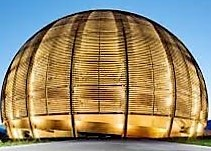Speaker
Description
It has long been postulated that the onset of electron captures in degenerate high-density ONe cores of super-AGB stars would trigger a supernova, resulting in a collapse into a neutron star (NS). New models of these so-called electron capture supernovae (ECSNe) suggest that while the full collapse to a NS is still a possibility, the energy release by the electron-capture reactions can also trigger a thermonuclear runaway initiating explosive thermonuclear burning and leaving behind a bound ONeFe remnant in a "thermonuclear ECSN" (tECSN). So far, however, tECSNe remain purely in the realm of theory. No optical observables have been predicted form simulations that could be used for a direct comparison with astronomical observations of such transients, thus confirming or denying their existence.
Initial studies suggest that tECSNe could reproduce the solar abundances of important and so far problematic isotopes such as $^{48}$Ca, $^{50}$Ti, $^{54}$Cr, together with $^{58}$Fe, $^{64}$Ni, $^{82}$Se, and $^{86}$Kr as well as several Zn-Zr isotopes, without introducing new tensions with the solar abundance distribution. If tECSNe proved to exist in nature, even at a low occurrence rate, they would provide an elegant way to cover these remaining blemishes on the charts of astrophysical element production.
The tECSN scenario could not only establish a new production sites for thus far problematic isotopes in the solar inventory, it could also have implications on NS formation rates or provide an additional way of probing nuclear reaction rates. To this end, we plan complement our three-dimensional hydrodynamic explosion simulations with detailed radiative transfer calculations to reliably predict observables from such events. This will eventually form the basis for building evidence for or against the existence of tECSNe, either by comparison with literature data or data from dedicated transient surveys.




